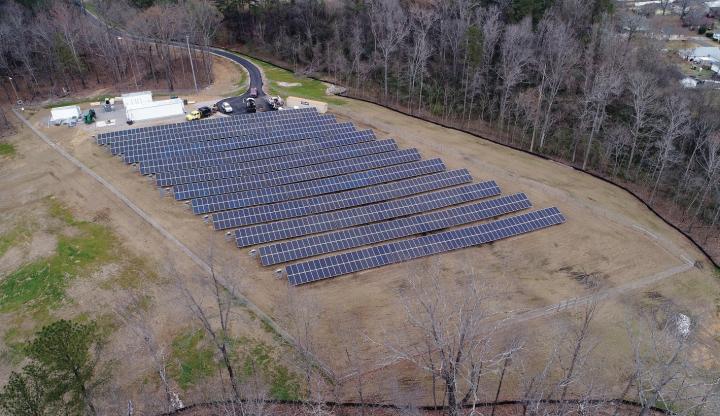From the Department of Energy’s Oak Ridge National Laboratory

Credit: Southern Company
Energy – Whatever the weather
To better determine the potential energy cost savings among connected homes, researchers at Oak Ridge National Laboratory developed a computer simulation to more accurately compare energy use on similar weather days.
“Since no two weather days are alike, we created a simulated weather identification model that keeps environmental impacts such as temperature changes and sunlight consistent,” said ORNL’s Supriya Chinthavali. “This will help address the challenge of quantifying energy cost savings, which utility companies and homeowners are most interested in.”
The team is analyzing energy use data from a neighborhood-level research platform comprising 62 homes called Smart Neighborhood®, powered by traditional electric grid and microgrid sources.
The goal is to co-optimize energy cost, comfort, environment and reliability by controlling the connected homes’ devices – particularly the HVAC and water heater, a home’s largest energy consumers.
Future analysis by ORNL, Southern Company and university partners will include potential energy cost savings details.
Media Contact: Sara Shoemaker, 865.576.9219; [email protected]
Image: https:/
Caption: The microgrid for the Smart Neighborhood in Hoover, Alabama, consists of solar panels and a battery pack and allows homes to disconnect from the main power grid. Credit: Southern Company
Image: https:/
Caption: The Smart Neighborhood in Hoover, Alabama, a 62-home development is connected to a microgrid operated by ORNL’s open source controller. The research is sponsored by the DOE Building Technologies Office and supports BTO’s Grid-Interactive Efficient Buildings strategy. Credit: Southern Company
Grid – Below-ground balancing
Oak Ridge National Laboratory researchers created a geothermal energy storage system that could reduce peak electricity demand up to 37% in homes while helping balance grid operations.
The system is installed underground and stores excess electricity from renewable resources like solar power as thermal energy through a heat pump. The system comprises underground tanks containing water and phase change materials that absorb and release energy when transitioning between liquid and solid states.
ORNL’s design relies on inexpensive materials and is installed at shallow depths to minimize drilling costs. The stored energy can provide hours of heating in the winter or cooling in the summer, shaving peak demand and helping homeowners avoid buying electricity at peak rates.
“Shifting demand during peak times can help utilities better manage their loads while saving consumers money and encouraging greater use of renewable energy,” said ORNL’s Xiaobing Liu.
The team published results of the system’s performance from a simulation.
Media Contact: Stephanie Seay, 865.576.9894; [email protected]
Image: https:/
Caption: ORNL researchers have developed a system that stores electricity as thermal energy in underground tanks, allowing homeowners to reduce their electricity purchases during peak periods while helping balance the power grid. Credit: Andy Sproles/Oak Ridge National Laboratory, U.S. Dept. of Energy
Reactors – Quality codes to scale
Nuclear scientists at Oak Ridge National Laboratory have established a Nuclear Quality Assurance-1 program for a software product designed to simulate today’s commercial nuclear reactors – removing a significant barrier for industry adoption of the technology.
The suite of tools called VERA, the Virtual Environment for Reactor Applications developed by the Consortium for Advanced Simulation of Light Water Reactors, or CASL, can be used to solve various challenges in nuclear reactor operations and consists of several physics codes related to neutron transport, thermal hydraulics, fuel performance and coolant chemistry.
The goals of the continued work in improving the simulation software are to help industry by boosting the power output from existing reactors and to improve designs and confidence in current and future reactors.
ORNL’s Shane Stimpson co-leads MPACT, the component of VERA responsible for modeling power distribution throughout the reactor core.
“When developing these codes, we’re listening to industry’s needs to provide reactor simulations with broader appeal and value,” he said.
Media Contact: Sara Shoemaker, 865.576.9219; [email protected]
Image: https:/
Caption: Oak Ridge National Laboratory has established a quality assurance program as part of an effort to highlight software simulation product quality and make the codes more useful to industry. Credit: Benjamin Collins/Oak Ridge National Laboratory, U.S. Dept. of Energy
###
Media Contact
Sara Shoemaker
[email protected]
865-576-9219
Original Source
https:/
Related Journal Article
http://dx.




